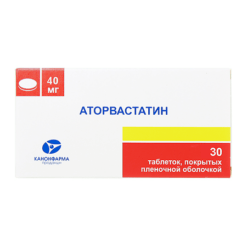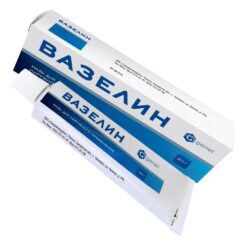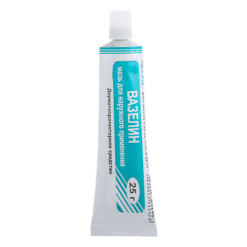No products in the cart.
Lorinden C, ointment 15 g
€23.73 €19.95
Out of stock
(E-mail when Stock is available)
Description
Lorinden C is a drug with antibacterial, antifungal and anti-inflammatory action for external use.
Flumetazon is a synthetic bifluorinated GCS for external use. It has anti-inflammatory, anti-allergic, antipruritic, anti-edema and vasoconstriction effects.
When applied to the skin it prevents marginal accumulation of neutrophils, which leads to a decrease in inflammatory exudate and lymphokine production, inhibition of macrophage migration, reduction of infiltration and granulation processes. It reduces production of prostaglandins and leukotrienes by inhibition of phospholipase A2 activity and reduction of arachidic acid release from cell membrane phospholipids.
Causes reduction of connective tissue basic substance, attenuates proliferative and exudative reactions in the skin. It is an inhibitor of cellular kinins which have proteolytic activity.
Clioquinol (iodochloroxyquinoline) is a derivative of 8-oxyquinolines. It is active against dermatophytes, yeast fungi (Microsporum spp., Trichophyton spp., Candida albicans) and gram-positive bacteria (Staphylococcus spp., Enterococcus spp.).
It enhances the anti-exudative effect of flumetasone.
As a result of the combined action of flumetasone and clioquinol (iodochloroxyquinoline) the drug suppresses the development of inflammatory-allergic reactions from the skin, complicated by bacterial and fungal infection.
The fatty base of Lorinden C ointment has a soothing effect, has water-repellent properties and forms a protective film that protects the skin from the effects of external moisture. Thanks to the nature of the ointment base the drug can be used in patients with dry and thinning skin.
Indications
Indications
Allergic dermatoses complicated by the addition of a bacterial infection caused by microorganisms sensitive to clioquinol:
dermatitis (including allergic, contact, occupational, seborrheic, solar);
eczema;
psoriasis (especially old cases, including psoriasis of the scalp);
erythema multiforme;
erythroderma;
atopic dermatitis (common neurodermatitis);
pruritus;
dermatoses that are not amenable to GCS therapy (including lichen planus, discoid lupus erythematosus);
hives;
secondary infections from insect bites.
Bacterial and fungal infections of the skin, complicated by the development of local allergic reactions:
impetigo;
infected diaper rash;
dermatomycosis, actinomycosis, blastomycosis, sporotrichosis.
Pharmacological effect
Pharmacological effect
Lorinden S is a drug with antibacterial, antifungal and anti-inflammatory effects for external use.
Flumethasone is a synthetic bifluorinated corticosteroid for external use. It has anti-inflammatory, antiallergic, antipruritic, decongestant and vasoconstrictor effects.
When exposed to the skin, it prevents the marginal accumulation of neutrophils, which leads to a decrease in inflammatory exudate and the production of lymphokines, inhibition of macrophage migration, and a decrease in the processes of infiltration and granulation. Reduces the production of prostaglandins and leukotrienes by inhibiting the activity of phospholipase A2 and reducing the release of arachidic acid from cell membrane phospholipids.
Causes a reduction in the basic substance of connective tissue, weakens proliferative and exudative reactions in the skin. It is an inhibitor of cellular kinins with proteolytic activity.
Clioquinol (iodochlorooxyquinoline) is a derivative of 8-hydroxyquinolines. Active against dermatophytes, yeast fungi (Microsporum spp., Trichophyton spp., Candida albicans) and gram-positive bacteria (Staphylococcus spp., Enterococcus spp.).
Strengthens the antiexudative effect of flumethasone.
As a result of the combined effect of flumethasone and clioquinol (iodochloroxyquinoline), the drug suppresses the development of inflammatory and allergic reactions in the skin, complicated by bacterial and fungal infections.
The fatty base of Lorinden S ointment has a softening effect, has a water-repellent effect and forms a protective film that protects the skin from external moisture. Due to the peculiarities of the ointment base, the drug can be used in patients with dry and thin skin.
Special instructions
Special instructions
Use with caution for skin mycoses.
Active ingredient
Active ingredient
Clioquinol, Flumethasone
Composition
Composition
1 gram of ointment contains:
Contraindications
Contraindications
Hypersensitivity to the components of the drug.
Viral skin diseases (herpes, chickenpox), skin tuberculosis, skin manifestations of syphilis, neoplasms and precancerous skin conditions (skin cancer, nevus, atheroma, epithelioma, melanoma, hemangioma, xanthoma, sarcoma).
Acne vulgaris and rosacea, perioral dermatitis, trophic ulcers of the leg associated with varicose veins, conditions after vaccination.
Skin infections (for occlusive dressings).
Do not use the drug in children under 10 years of age.
Side Effects
Side Effects
Contact eczema;
allergy symptoms (mainly in persons with existing allergic diseases – eczema, leg ulcer, etc.);
exacerbation of existing changes in acne vulgaris or rosacea; papular or erythematous manifestations resistant to any treatment methods (with long-term use);
post-steroid acne, purpura, telangiectasia, skin atrophy and stretching, perioral dermatitis, dry mouth, hypopigmentation.
Interaction
Interaction
During therapy with Lorinden S, vaccinations and immunizations should not be performed due to the immunosuppressive effect of the drug.
The drug should not be prescribed in combination with other drugs for external use.
When the drug is absorbed into the systemic circulation, flumethasone reduces the effectiveness of insulin, oral hypoglycemic agents, antihypertensive drugs, anticoagulants, and reduces the concentration of salicylates and praziquantel in the blood serum.
When used together, the risk of developing side effects of androgens, estrogens, oral contraceptives, anabolic steroids (hirsutism, acne) increases;
antipsychotics, bucarban, azathioprine (cataracts);
anticholinergics, antihistamines, tricyclic antidepressants, nitrates (glaucoma); diuretics (hypokalemia), cardiac glycosides (digitalis intoxication).
Overdose
Overdose
Cases of overdose are rare.
Symptoms: with improper, frequent or prolonged use in significant quantities over large areas, systemic side effects of GCS may occur.
Treatment: gradual withdrawal of the drug; symptomatic therapy.
Storage conditions
Storage conditions
At a temperature not exceeding 25 °C.
Shelf life
Shelf life
3 years.
Manufacturer
Manufacturer
Pharmaceutical plant Elfa A.O., Poland
Additional information
| Shelf life | 3 years. |
|---|---|
| Conditions of storage | At a temperature not exceeding 25 °C. |
| Manufacturer | Jelfa Pharmzavod, Poland |
| Medication form | topical ointment |
| Brand | Jelfa Pharmzavod |
Other forms…
Related products
Buy Lorinden C, ointment 15 g with delivery to USA, UK, Europe and over 120 other countries.















